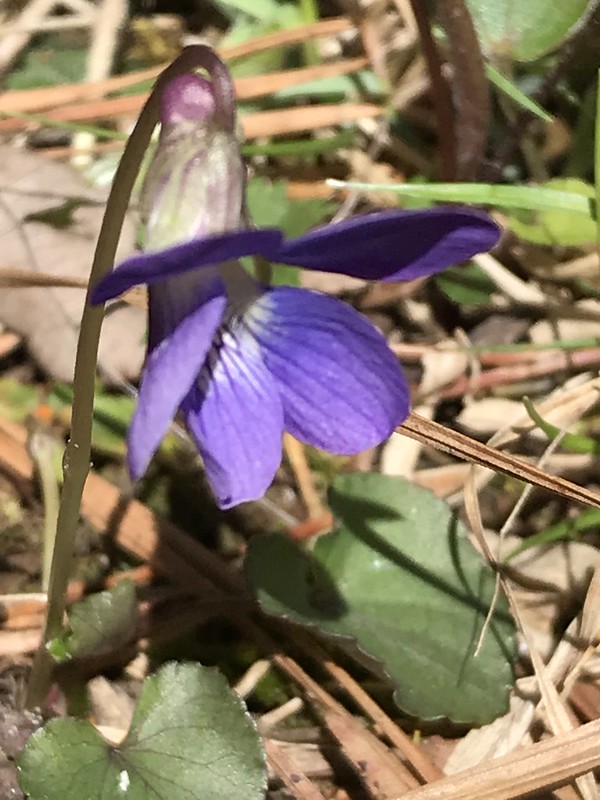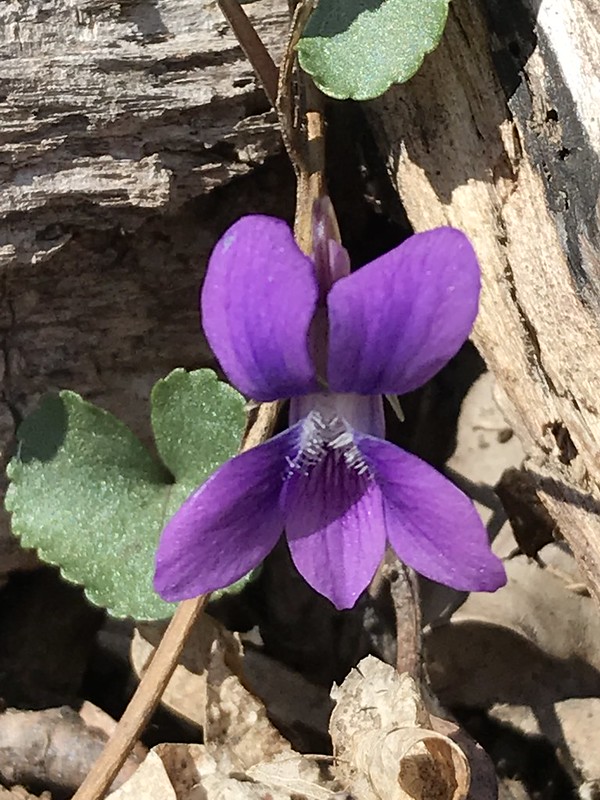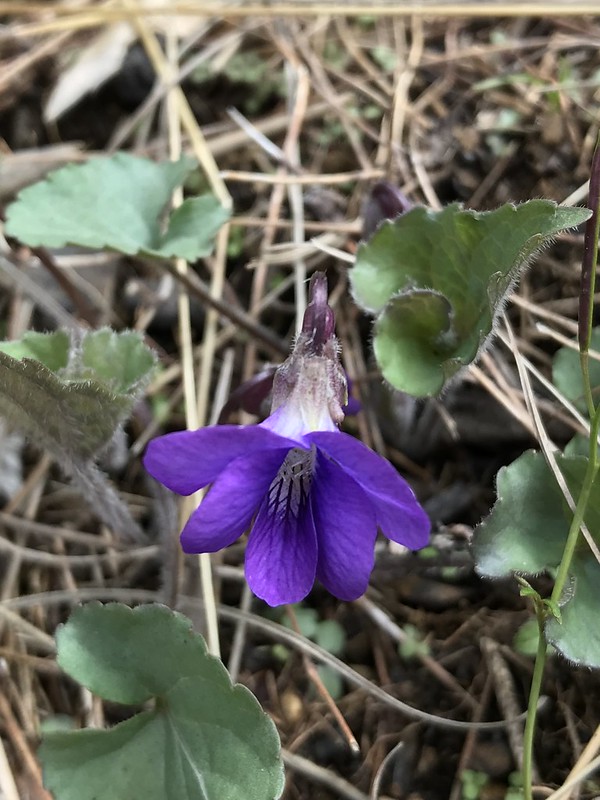Map Snapshot











53 Records
Seasonality Snapshot
Use of media featured on Maryland Biodiversity Project is only permitted with express permission of the photographer.
Southern Woodland Violets blooming in Washington Co., Maryland (4/16/2016).
View Record Details
Media by
Jim Stasz.
Southern Woodland Violet in Allegany Co., Maryland (4/22/2020).
View Record Details
Media by
Mark Eanes.
Southern Woodland Violet in Allegany Co., Maryland (4/20/2020).
View Record Details
Media by
Mark Eanes.
Southern Woodland Violet in Allegany Co., Maryland (4/29/2020).
View Record Details
Media by
Mark Eanes.
Source: Wikipedia
| Viola hirsutula | |
|---|---|

| |
| Scientific classification | |
| Kingdom: | Plantae |
| Clade: | Tracheophytes |
| Clade: | Angiosperms |
| Clade: | Eudicots |
| Clade: | Rosids |
| Order: | Malpighiales |
| Family: | Violaceae |
| Genus: | Viola |
| Species: | V. hirsutula
|
| Binomial name | |
| Viola hirsutula Brainerd
| |

Viola hirsutula, common name southern woodland violet, is a perennial species of violet found in the eastern United States.[1]
Conservation status
[edit]It is listed extirpated in Indiana, endangered in New York,[2] and as a special concern and believed extirpated in Connecticut.[3]
References
[edit]- ^ "Plants Profile for Viola hirsutula (southern woodland violet)". plants.usda.gov. Retrieved 10 January 2018.
- ^ "Plants Profile for Viola hirsutula (southern woodland violet)". plants.usda.gov. Retrieved 10 January 2018.
- ^ "Connecticut's Endangered, Threatened and Special Concern Species 2015". State of Connecticut Department of Energy and Environmental Protection Bureau of Natural Resources. Retrieved 10 January 2018. (Note: This list is newer than the one used by plants.usda.gov and is more up-to-date.)



